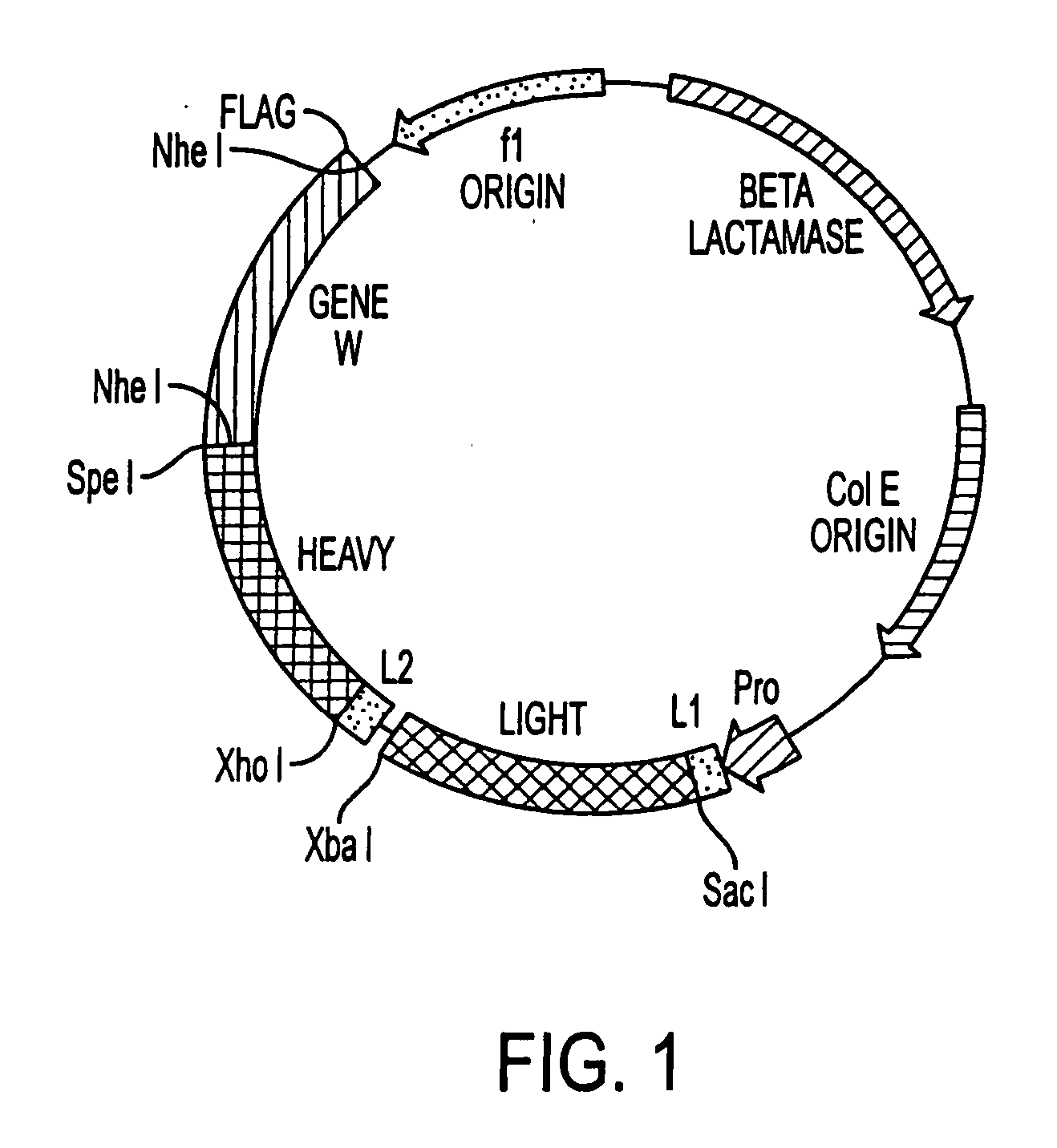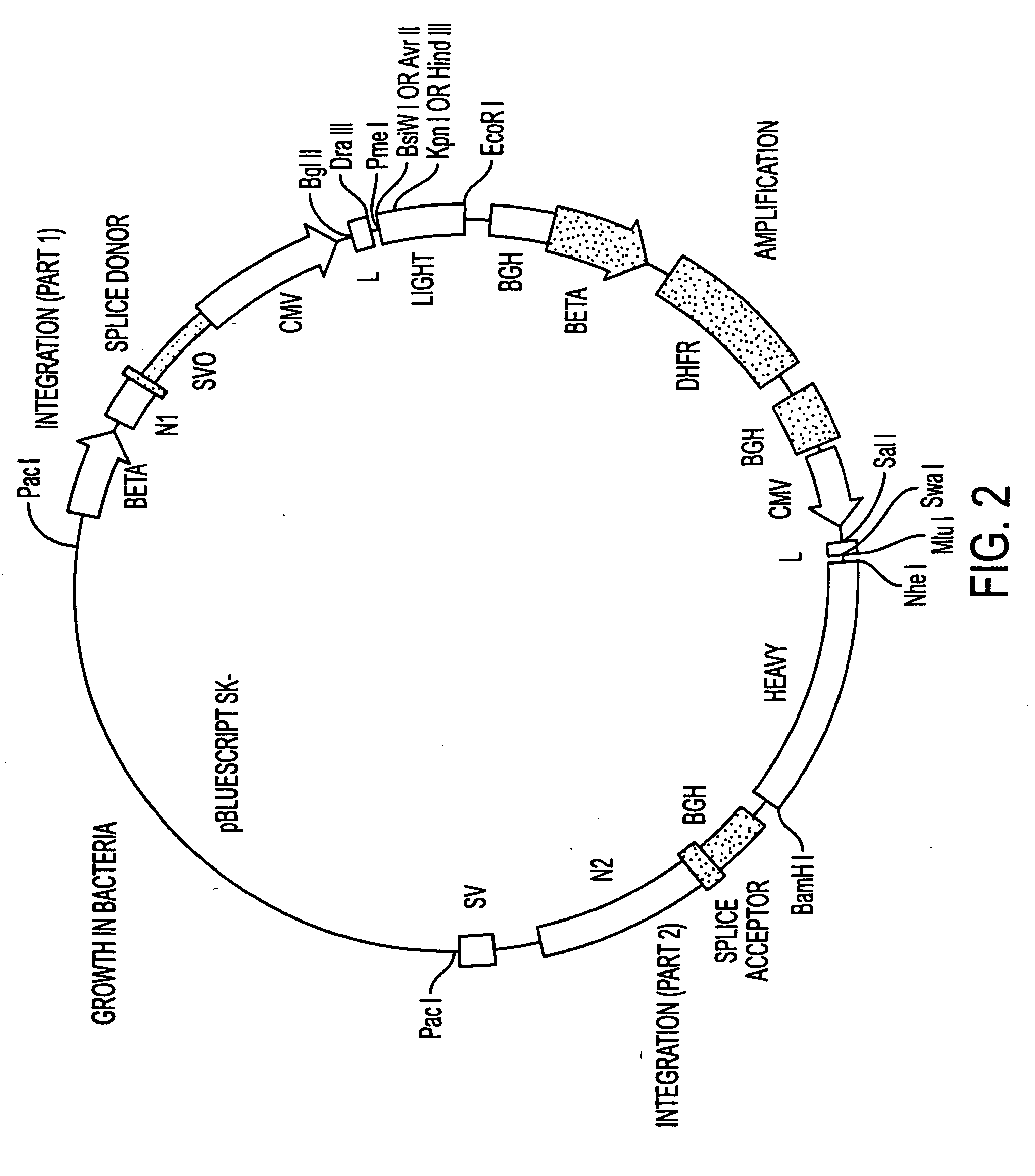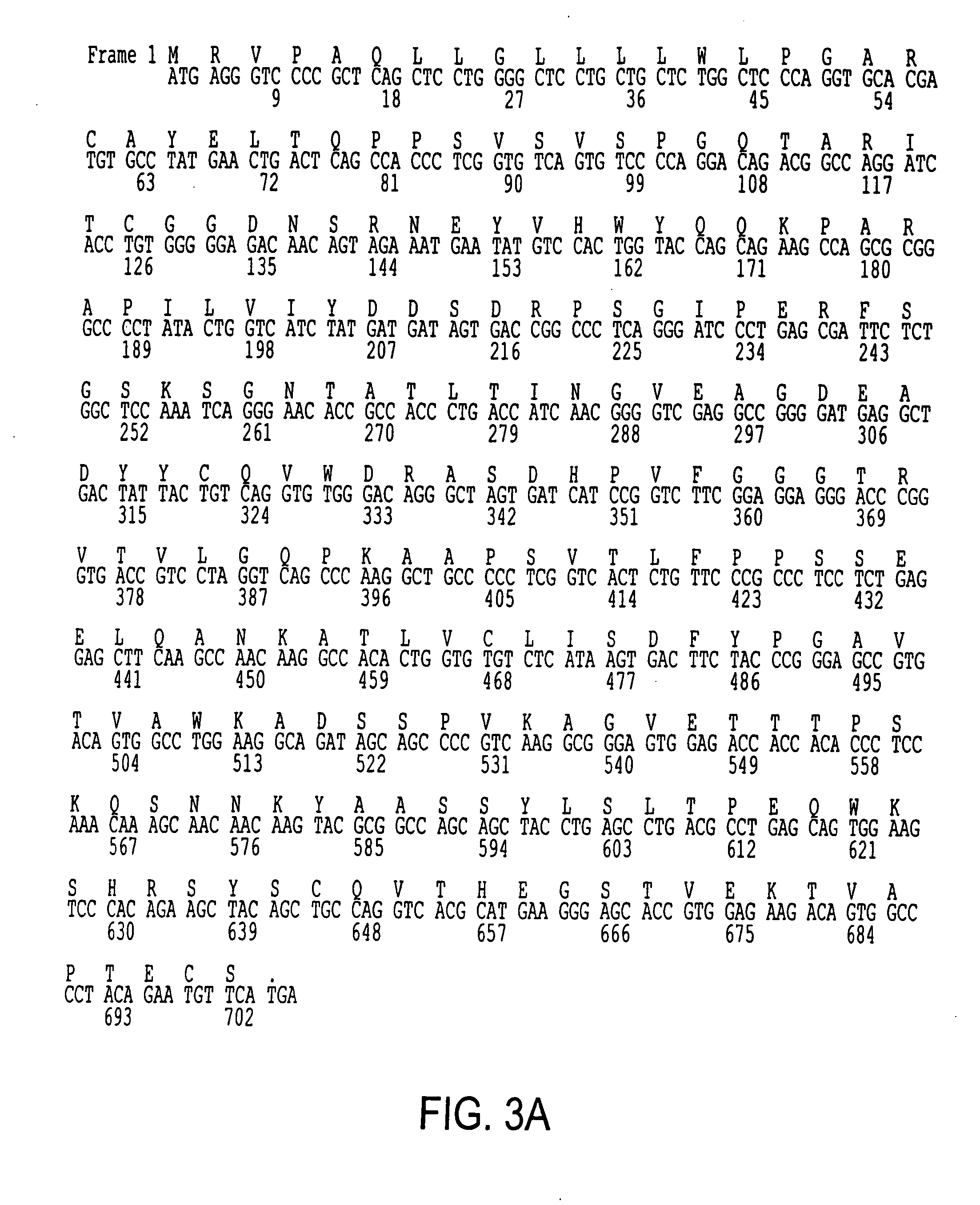Identification of unique binding interactions between certain antibodies and the human B7.1 and B7.2 co-stimulatory antigens and therapy thereof
- Summary
- Abstract
- Description
- Claims
- Application Information
AI Technical Summary
Benefits of technology
Problems solved by technology
Method used
Image
Examples
example 1
[0162] Recombinant immunoglobulin libraries displayed on the surface of filamentous phage were first described by McCafferty et al, Nature, 348:552-554, 1990 and Barbas et al, Proc. Natl. Acad. Sci., USA 88:7978-7982, 1991. Using this technology, high affinity antibodies have been isolated from immune human recombinant libraries (Barbas et al, Proc. Natl. Acad. Sci., USA 589:10164-10168, 1992). Although the phage display concept used is substantially similar to that described by Barbas, 1991, Id. the technique has been modified by the substitution of a unique vector for monkey libraries to reduce the possibility of recombination and improve stability. This vector, pMS, FIG. 1 contains a single lac promoter / operator for efficient transcription and translation of polycistronic heavy and light chain monkey DNA. This vector contains two different leader sequences, the omp A (Movva et al, J. Biol. Chem. 255: 27-29 (1980), for the light chain and the pel B (Lei, J. Bact., 4379-109:4383 (1...
example 2
Development of B7 / CTLA-4 Reagents
[0166] We have generated a number of reagents for the purpose of immunizing monkeys, developing binding and functional assays in vitro, screening heterohybridomas and panning phage libraries. Table 1 lists each reagent and its intended purpose. In the case of B7.1, RNA was extracted from SB cells and converted to cDNA using reverse transcriptase. The first strand cDNA was PCR amplified using B7.1 specific primers and cloned into IDEC's NEOSPLA mammalian expression vectors. CHO cells were transfected with B7.1 NEOSPLA DNA and clones expressing membrane associated B7.1 were identified. The B7.1 fusion protein was generated similarly, except that the PCR amplified B7.1 gene was cloned into a NEOSPLA cassette vector containing the human CH2 and CH3 immunoglobulin genes. CHO cells were transformed with the B7.1 / Ig NEOSPLA DNA and stable clones secreting B7.1 / Ig fusion protein were amplified. In general, the B7.2 and CTLA4 reagents were generated in the ...
example 3
Generation of a Phage Display Library
[0168] Recombinant phage display libraries are generated from B7.1 and B7.2 immune monkeys. Lymph node and bone marrow biopsies are performed 7-12 days after immunization to harvest RNA rich B cells and plasma cells. RNA is isolated from the lymphocytes using the method described by Chomczynski, Anal. Biochem., 162(1), 156-159 (1987). RNA is converted to cDNA using an oligo dT primer and reverse transcriptase. The first strand cDNA is divided into aliquots and PCR amplified using the sets of kappa, lambda, and heavy chain Fd region primers described earlier and either Pfu polymerase (Stratagene, San Diego) or Taq polymerase (Promega, Madison). The heavy chain PCR amplified products are pooled, cut with Xho VSpe I restriction enzymes and cloned into the vector pMS. Subsequently, the light chain PCR products are pooled, cut with Sac I / Xba I restriction enzymes, and cloned to create the recombinant library. XLI-Blue E. coli is transformed with the...
PUM
| Property | Measurement | Unit |
|---|---|---|
| Electrical resistance | aaaaa | aaaaa |
| Interaction | aaaaa | aaaaa |
Abstract
Description
Claims
Application Information
 Login to view more
Login to view more - R&D Engineer
- R&D Manager
- IP Professional
- Industry Leading Data Capabilities
- Powerful AI technology
- Patent DNA Extraction
Browse by: Latest US Patents, China's latest patents, Technical Efficacy Thesaurus, Application Domain, Technology Topic.
© 2024 PatSnap. All rights reserved.Legal|Privacy policy|Modern Slavery Act Transparency Statement|Sitemap



